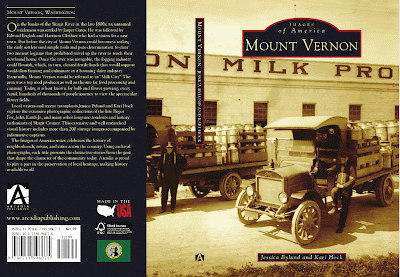Wednesday, May 30, 2012
Why Can’t They All be Like That?
A couple weeks ago we were tooling around town, trying to dig up some more history and photos. We decided to pop into the old Baptist Church and see what they might have. We ended up talking to the pastor who was amazingly kind and welcoming! We followed him down a dark hallway and made a right turn as he said, “How about you start here, in our history room.” WHAT? History ROOM?!? Yes folks, it is a shine to their over one hundred year history! We were amazed and thrilled. Talk about hitting the jackpot!
We returned the next week with computer and scanner to scan a few images. While there we learned that the first Boy Scout troop in all of Washington state had been formed at that church back in 1913. They are troop number one. Seriously, could this get any cooler?
Of course it can! The Reverend Davis, who formed the church back in the late 1800s (incidentally the first church in the town) also happens to be the first person to bring Holstein cattle to the region. We love how history all comes together.
Friday, May 18, 2012
Please Admire from Afar
Well that sure was fast! We dropped possible cover photos to our publisher last Friday. We then sent in our back cover text on Wednesday. This morning we were shocked to see this in our inbox:
WOO HOO!!! Who loves it? We love it! Don’t look too closely though, we already see some editing we need to do on the text. Think of this as a first draft. But seriously, how PERFECT is that photo? Talk about meant to be.
We are so thrilled that this is something we will accomplish ahead of schedule! And seeing things take shape sure adds some motivation. Now we have to do that whole “book thing” and make the interior worthy of this amazing cover.
Thursday, May 10, 2012
Choosing a Cover
Oh the pressure, the deliberation, the agonizing decisions!!! But at some point it must be done. We must choose from all our fabulous photos some possible cover contenders. There are some rules, restrictions and guidelines for acceptable cover images. And of course there is our opinion and our publisher’s opinion. We hope they turn out to be the same.
At first there was a great logging photo that caught our eye. Unfortunately, we discovered the picture was NOT from Mount Vernon. Turns out that was a blessing in disguise. We had to look harder and think more. After all, this is the Northwest. Logging certainly wasn’t unique to Mount Vernon. So what is unique to Mount Vernon? Today people would probably say “tulips”. Right? True, but that wasn’t the case in the early days. However the success of tulip growing can give us hints to the past—fertile farm lands, crops, seeds, cows… Did you know that Mount Vernon used to be called “Milk City”? It was a combination of all the fine dairy farms and the multiple milk condenseries. As a matter of fact, Mount Vernon was home to the third ever condensery built by Carnation in 1907! At that time evaporated milk wasn’t simply used for baking here and there, it was considered the wave of the future!
To us, Milk City seems very unique and interesting. That is why this is our top choice for cover photo (printed with permission from the John Kamb collection): We’ll see if it makes the cut.
Thursday, May 3, 2012
Why Doesn’t Anyone Write Like This Anymore?
Today we paid a visit to the Skagit County Historical Museum. We had asked about the English Logging Company (owned by one town founder, E. G. English). So the librarian brought out an old publication from September 1, 1921 that contained an extensive article on the logging company. It was a large volume entitled “Skagit County, Washington” and “Published by the Mount Vernon Herald”. It was historical GOLD! There were articles about the Milk Condenseries, the churches, the telephone company, and more. Needless to say we racked up a fair amount of photocopying fees.
But the best, and we mean the BEST part of the whole thing had to be the beginning of the Publisher’s Forward by one M. J. Beaumont. He writes:
"It is approximately forty years since there was started in Skagit county the work of changing arid tidelands and dense forest into beauteous and bountiful farmsteads where today reside the most prosperous and happy people that may be found within the confines of the nation."Oh man have we got to work that quote into the book!
Subscribe to:
Comments (Atom)





